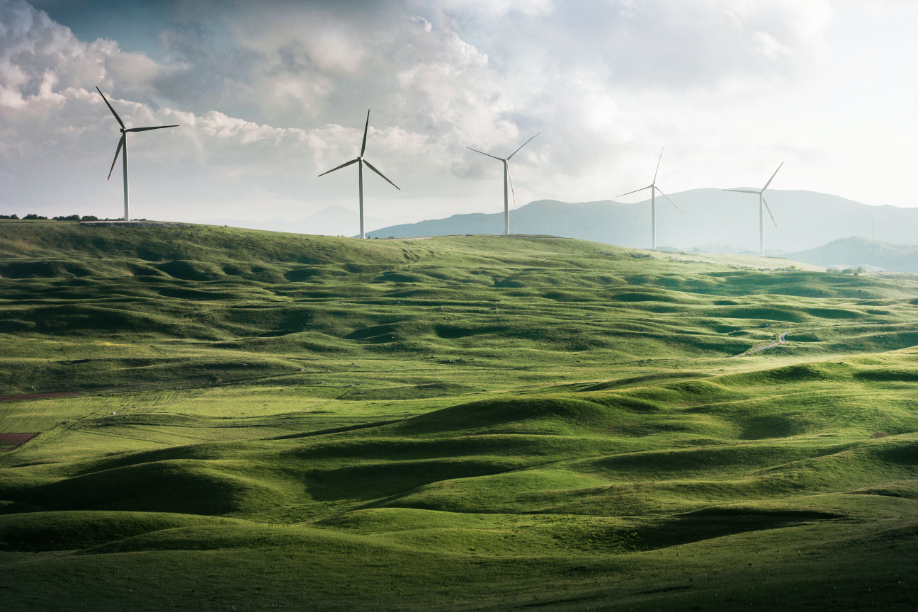

Four trends that are fueling Canada's clean energy transition
It is widely acknowledged that the amount of carbon dioxide released into the atmosphere during the burning of fossil fuels such as coal, oil and natural gas has reached harmful levels. Canada is one of the biggest contributors of carbon dioxide emissions and it was reported in 2019 that Canada is warming twice as fast as the rest of the world – in part accelerated by human activity.
During 2020, however, Canada saw a reduction in annual CO2 emissions from 582.39 million tonnes in 2019, to 535.82 million tonnes, likely due to a dramatic reduction in societal activities because of the COVID-19 lockdowns.
Society has the greatest impact on how much global warming we will see in the world, and we can’t eliminate energy usage, especially as populations grow and we require new and improved infrastructure and connectivity. We can, however, reduce the use of fossil fuels and adopt clean energy solutions to help promote positive change.

What is clean energy?
Clean energy refers to any supplies of renewable power created from natural sources that are inexhaustible or available always. Renewable energy comes from resources such as the sun, wind, waves, or tides and emits much lower levels of carbon dioxide emissions than those which are fossil fuel-based.
In late 2021, an urgent call to action was issued by the Canadian Renewable Energy Association (CanREA), a trade group with more than 300 member organizations, to speed up the country’s transition to low carbon or clean energy. Additionally, Clean Energy Canada states that we must focus on four key areas:
- an increase in renewable energy supply
- an improvement to the infrastructure and systems that transmit, store, and use energy
- an enhancement of energy efficiency, delivering the same services with less energy
- the delivery of key energy services—power, heat, and transportation—while reducing carbon pollution
Renewable energy supply
As we move away from the use of traditional fossil fuels, the most prominent types of renewable energy sources that are powering our lives include wind, solar, biomass, hydropower, and geothermal. These methods play an important role in reducing greenhouse gas emissions because they produce little to no carbon dioxide and are created by resources that are available in infinite quantities.
Carbon capture and energy-storage
A huge opportunity to make improvements on the route to Net Zero is to use energy storage. This is an increasingly common technique that is being used, particularly with batteries. In 2021, it was announced that AtkinsRéalis would work with an energy storage developer on exploring opportunities to convert end-of-life fossil power plants to clean energy facilities. Together with E2S Power, we will work with utilities and power generators to evaluate and offer optimized integrated thermal energy solutions for existing plants and facilities being phased out.
Using technology to deliver the same services
Digitalization has improved every sector and industry in the world. With clean energy, technology is revolutionizing and enhancing efficiency and delivering the same services (or better) with less energy. Artificial Intelligence (AI) and machine learning are transforming the future of renewable energy, allowing us to obtain better forecasts and manage systems more efficiently. At AtkinsRéalis , we partner with leading firms, such as Highview, to introduce new technologies to sustainable utility solutions, such as pumped storage, battery, liquid air and molten salt.
Decarbonization of key energy services
One of the key areas of growth in sustainable development both in Canada and the rest of the world is decarbonization. This refers to the reduction of CO2 emission output achieved by switching from traditional fossil fuels to using low-carbon alternatives based on green electricity and green molecules such as biofuels and hydrogen.
CanREA has stated that electricity production in Canada should be decarbonized by 2035, and to achieve this, the country must adopt a Clean Electricity Standard. This would mean that power on the grid comes only from low carbon resources.
Advancing with sustainable approaches at AtkinsRéalis in Canada
Over the past few years, AtkinsRéalis has been building a long-term strategy to Engineer Net Zero, because we want to rapidly address global challenges like climate change. Clean energy is a crucial solution to climate issues, and this approach is beginning to shape our approach to engineering in Canada and around the world.
Are you ready to drive full speed ahead on the road to Net Zero? We’re looking for passionate and innovative professionals to join our teams and accelerate Canada’s clean energy transition. Browse our available civil engineering jobs in Canada and make a real impact on local, regional, and international communities.
Interested? Find out more about life at AtkinsRéalis
Sign up to receive the latest content tailored to your interests
Our articles
+(1).png)
Preview
EuropeContent type
BlogsPublish date
04/01/2025
Summary
"I've always wanted to pursue an engineering degree. As a child, I changed my dream discipline as often as I got a haircut! Eventually, I chose Electronics and Communications Engineering and compl

Preview
IndiaContent type
BlogsPublish date
03/25/2025
Summary
Hello, my name is Nikita. AtkinsRéalis is the first company I joined as a dedicated HR professional, where I spent over three years hiring talented, deserving candidates and supporting smooth or

by
Akash Kumar

Preview
EuropeContent type
BlogsPublish date
03/24/2025
Summary
My name is Kamal. I was born in Lebanon, where I also attended school (below is a beautiful picture of Lebanon). I completed my university days in Lebanon, Texas and London. I'm a Structural Engin

Preview
CanadaContent type
BlogsPublish date
03/20/2025
Summary
Snippet title Lire en français Meet Marc-Antoine, a structural engineer and structural inspection and asset management expert at AtkinsRéalis in Canada. Let’s learn about his passion for st

Preview
IndiaContent type
BlogsPublish date
03/20/2025
Summary
Behind every successful project, from towering skyscrapers to cutting-edge industrial facilities, there’s a structured and efficient flow of information. At the heart of this process is the documen
.jpg)
Preview
AfricaContent type
BlogsPublish date
03/19/2025
Summary
Architecture jobs in Egypt are among the fastest-growing opportunities in the country. Projected to grow by 20% by 2030, the market is booming, creating plenty of demand for visionary architects in

Preview
IndiaContent type
BlogsPublish date
03/19/2025
Summary
Transport systems are the backbone of any economy. In India, they’re hugely influential for both connectivity and trade facilitation. Transport systems in India are projected to account for 40% of

Preview
IndiaContent type
BlogsPublish date
03/18/2025
Summary
Imagine a career where your engineering expertise doesn’t just contribute to projects—it helps shape the world’s future. At AtkinsRéalis India, we offer you the chance to be part of groundbreaking

Preview
EuropeContent type
BlogsPublish date
03/12/2025
Summary
Hi, I'm Lana. I hold a French engineering degree in geotechnical and civil engineering from Polytech Grenoble, which included a two-semester Erasmus+ exchange at Loughborough University. My journ

Preview
AsiaContent type
BlogsPublish date
03/11/2025
Summary
Sustainability is no longer a choice but an imperative for modern engineering. Today, it is woven into every decision, every project, and every goal. At AtkinsRéalis, we have the privilege to

by
Shailaja Mantha

Preview
IndiaContent type
BlogsPublish date
03/07/2025
Summary
Hello, my name is Manali, and I work at AtkinsRéalis at the Global Technology Centre (GTC) in India. This International Women's Day, I want to tell you about my career journey, which has been as

by
Akash Kumar
.jpg)
Preview
EuropeContent type
BlogsPublish date
03/06/2025
Summary
The state of the UK water industry Water is the foundation of life. It sustains communities, powers industries, and supports ecosystems—but across the world, this critical resource is under increa
Related jobs
We are sorry there are no jobs that match your exact criteria. Try a new search term, or use the filters to continue browsing for available opportunities.
View all
Equality, diversity and inclusion
We’re devoted to growing the diversity of our people, promoting an inclusive culture, providing everyone with an equal voice because simply put, it’s the right thing to do. Click to learn more.
Find out more



